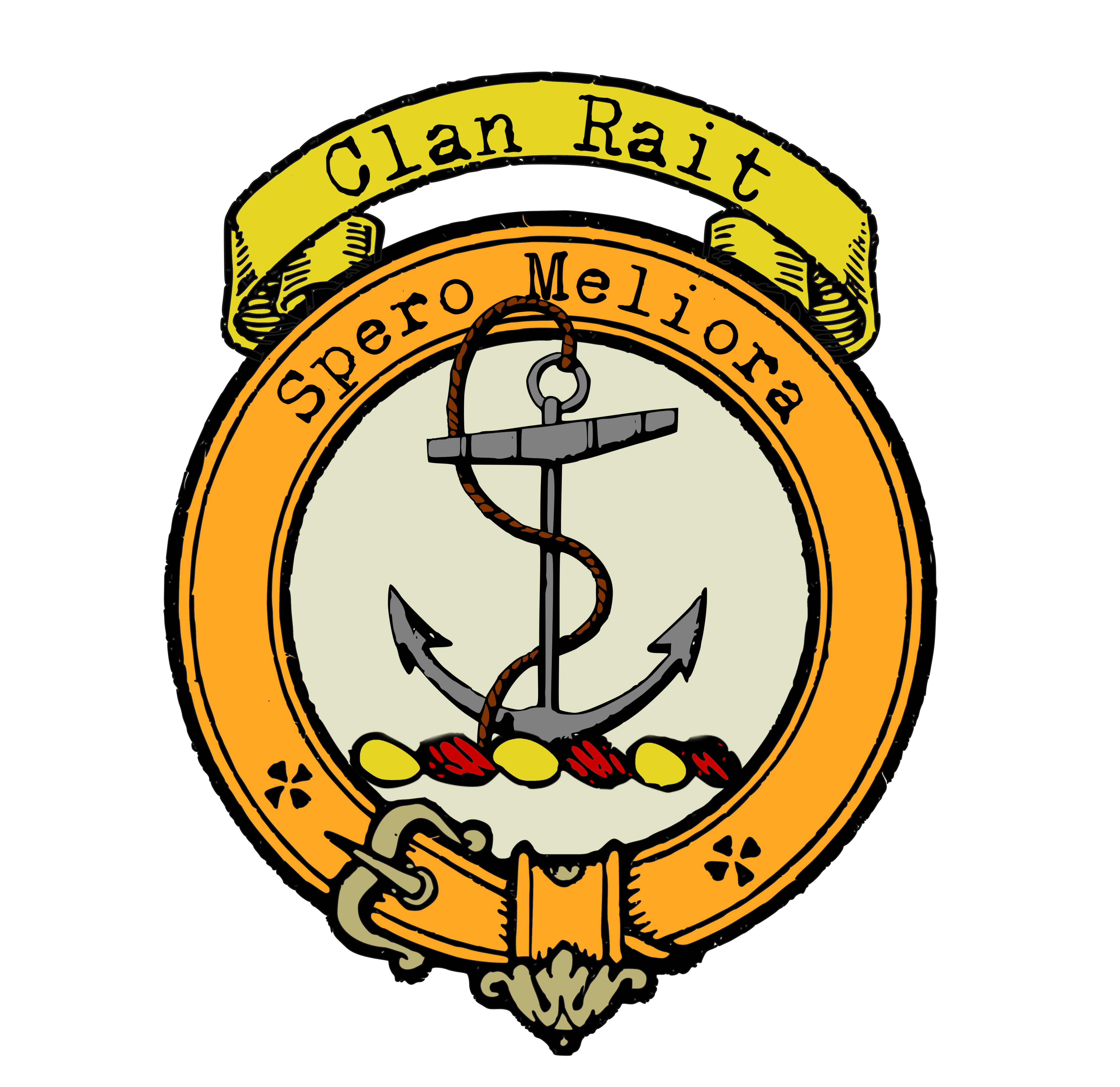Clan Rait Crest
|
|
CREST: An anchor Proper MOTTO: Spero meliora TRANSLATION: I hope for better things VARIATIONS: N/A |
| The name Rait is believed to have Germanic roots, possibly originating from ‘Rhet.’ This Germanic influence likely found its way into Scotland in the early medieval period, with lands granted to the first Raits near Nairn. Over time, the clan expanded its reach, spreading to the regions of Perthshire and Fife.
One of the earliest recorded members of Clan Rait is Sir Gervase de Rathe. Serving as the constable of Inbernairn around 1292, he also appeared in the historic Ragman Roll, where he paid homage to Edward I of England for his lands. Nisbet, a Scottish heraldist, described him as Sir Gervais Rait of that Ilk, hinting at his significance within the clan. One of the earliest recorded members of Clan Rait is Sir Gervase de Rathe. Serving as the constable of Inbernairn around 1292, he also appeared in the historic Ragman Roll, where he paid homage to Edward I of England for his lands. Nisbet, a Scottish heraldist, described him as Sir Gervais Rait of that Ilk, hinting at his significance within the clan. Sir Alexander Rait, another notable figure in the clan’s history, was involved in a dramatic incident – the killing of the Thane of Calder. Fleeing the consequences of this act, he sought refuge under the protection of the powerful Keith family, the Earls Marischal. This event showcases the complexities of medieval Scotland, where alliances and protection were often matters of life and death. Mark Rait, the son of Sir Alexander, married the heiress of the Hallgreen estates, leading to the adoption of the territorial style “Hallgreen” by the principal families of Clan Rait. This change in name signified their close ties to these estates and their continued influence in the region. David Rait of Hallgreen and Drumnagar received a charter of confirmation to his estates from James III, further solidifying the family’s landownership and status within Scottish society. Not all members of Clan Rait were involved in martial pursuits. Bishop John Rait served as the Bishop of Aberdeen and passed away in 1655, indicating that the clan had individuals in significant religious positions. Descendants of the Raits of Hallgreen established branches of the family, including the Raits of Pitforthie and Anniston, ensuring that the clan’s legacy endured through the generations. James Rait of Anniston stands out in the clan’s history for his military service. He commanded a regiment of lancers in the British Legion during the Spanish conflict of 1835-37 and was decorated for his bravery. His marriage to Lady Clementiana, a daughter of the Earl of Airlie, added a touch of aristocracy to the clan’s story. |
|
Citations:
|
|

Purchase @ Redbubble
Purchase @ Amazon.com
Purchase @ Amazon.co.uk

